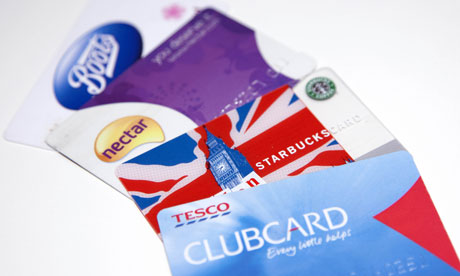 British Airways have drastically reduced the benefits of their loyalty scheme for most travelers. Under pressure Tesco are mooted to be considering ditching Dunnhumby, the operators of its famous Clubcard loyalty scheme. Both businesses are under pressure from low-cost competition. It appears big questions are being asked about the sense and value of these expensive loyalty programs. In the face of increasingly one dimensional price-based retail marketing and travel, can loyalty programs create enough value for customers and the businesses that run them?
British Airways have drastically reduced the benefits of their loyalty scheme for most travelers. Under pressure Tesco are mooted to be considering ditching Dunnhumby, the operators of its famous Clubcard loyalty scheme. Both businesses are under pressure from low-cost competition. It appears big questions are being asked about the sense and value of these expensive loyalty programs. In the face of increasingly one dimensional price-based retail marketing and travel, can loyalty programs create enough value for customers and the businesses that run them?
How should loyalty programs add value?
The value of a loyalty card to a business comes largely in two forms: its ability to encourage customers to spend money (either via more frequent trips or spending more each trip) and the value of the data that it provides about those customers. But in fact, the value that is accrued from loyalty cards is highly questionable.
Loyalty programs– not offering enough customer value
Loyalty programs, perversely, may not actually create loyalty. Analytics firm TABS Group suggest that shoppers who join loyalty programs actually frequent more different stores than those who don’t. Why is that? Perhaps loyalty programs attract shoppers who are more deal focused – and therefore they are more likely to shop around. More than this, loyalty programs are less valuable than before. The weight of deals in the market has increased dramatically since Clubcard was launched: the possible long term win of saving for points is forgotten as shoppers are bombarded with heavyweight pricing deals which pay back immediately. The same is true with flying: at some point the benefits of loyalty programs seem irrelevant compared with the gob-smacking differences in prices. And it’s more than price. Tesco has been criticized for the state of many of its stores. British Airways too is criticized for not having invested enough in cabin comfort and entertainment. Reward points are all well and good, but paying more for an offer which isn’t superior enough – well at some point the customer feels like they are being taken for a ride. So it appears that customers are waking up to the reality that they are being asked to pay a high for the privilege of collecting points and a few perks. But before we dismiss loyalty programs out of hand, there is another major source of value that we need to consider. Data.
Loyalty programs – Creating value from data
But what then of the data? Surely all of that data is massively valuable? Yes, and no! The value of data is limited – real value comes from the insight that you create. And, in a sort of circular argument, the value of the insight is limited to the quality of the data that it is formed from.
Data as a revenue stream, not an insight source
Clubcard was created for Tesco by Dunnhumby, a business that Tesco subsequently bought. Talking to insiders within Dunnhumby, and with Tesco’s suppliers, Tesco’s attitude to that data has changed dramatically over the last ten years. Suppliers speak of being ‘arm-twisted’ into buying Dunnhumby data; managers within the company talk of a company culture which was about revenue rather than actionable insight. I don’t know if this is true, but if Tesco’s attitude towards Dunnhumby skewed towards it being a sellable commodity, rather than a source of fabulous shopper insight, then that would explain a lot.
Loyalty programs – the limitation of loyalty data
But the biggest problem with the data from loyalty programs is that it simply doesn’t tell all of the story. A client of mine, asking permission to conduct shopper research in Tesco stores, was told by the buyer: “Don’t bother with that. Just use Clubcard data. It will tell you everything you need to know about shoppers”. Now this might have been a tactic to get my client to buy the data (see above), but it might also explain why Tesco missed so much, because it simply isn’t true. Clubcard data is not all you need to know. It’s skewed horribly in several ways:
– It doesn’t show you all the shoppers. Most importantly, it doesn’t cover people who don’t shop at that store.
– It doesn’t represent all shopper types. Loyalty data only shows you the behavior of shoppers with the card. We’ve seen earlier in this post that those with cards are not typical, and may be skewed towards promotional deals. What would happen if you used an analysis of data based on shoppers who loved promotions to make your strategy? Yes – you’d do lots more promotions. Sound familiar?
– It doesn’t show the purchases they make in other channels or chains, therefore it is impossible to get a complete understanding of shopping behavior from an analysis of just loyalty card data. Recent trends such as shopping trip fragmentation may be hidden to someone only looking at limited data from one chain I don’t know how much research Tesco commissioned beyond their own data sources, but anecdotal evidence suggests that perhaps their insights and marketing teams are suffering from a little Clubcard-induced myopia!
So should Tesco ditch Clubcard? Are British Airways right to cut back on Avios? No! But if they want their loyalty programs to create value, then these organizations need to adjust how they manage these loyalty programs: –
Don’t over-rely on loyalty programs. A loyalty scheme is no replacement for superior product and customer experience.
Remember that data is a commodity. Yes, that commodity can be sold, but more value can be accrued from insight. Insight is where the real value lies. –
There is more to understanding your customer than collecting loyalty scheme data. Companies should take a hard look at their Total Marketing approach: understanding their customers thoroughly as both users and purchasers. Only then will they be able to understand where, and if, loyalty programs have a role to play. Want to know more? Please get in touch!
Image: Flickr




